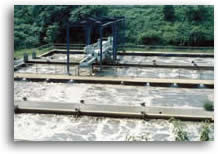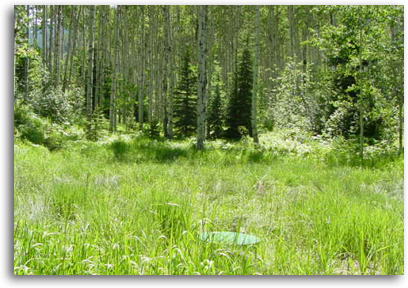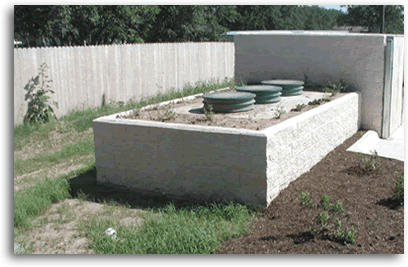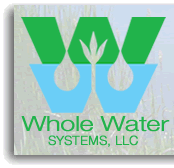| SUSTAINABLE WATER TREATMENT FOR MUNICIPALITIES
Decentralized – Sustainable – Sewer Mining – Resource Recovery – Biomimicry
The Challenge
The municipal water and wastewater infrastructure across the country is aging and riddled with environmental and sustainable inefficiencies. The American Society of Civil Engineers published a report in 2009 estimating the cost of essential infrastructure improvements in the trillions of dollars:
“leaky pipes… aging sewage systems… findings of a report … by the American Society of Civil Engineers, which assigned an overall D grade to the nation’s infrastructure and estimated that it would take a $2.2 trillion investment from all levels of government over the next five years to bring it into a state of good repair.” – New York Times on ASCE report, 2009
The water and wastewater infrastructure were designed and implemented during an era when sustainability and natural resources – such as freshwater and energy – were undervalued by conventional engineering. Indeed, much of the municipal water and wastewater engineering today is still a victim of this oversight. Sustainable design is recognizing these inefficiencies and advocating a radically different approach. Rather than assuming wastewater as a nuisance that needs to be made to go “away”, sustainable design advocates the treatment and reuse of “waste”water as close to its point of use as practicable. Green building programs like the U.S. Green Building Council’s LEED rating system give credits for the onsite treatment and reuse of wastewater; at the forefront of green, the Living Building Challenge mandates it.
Decentralize
Municiple wastewater treatment facilities are often at capacity with tremendous impediments – both economic and societal – to expansion. A solution to this challenge can be to locate distributed treatment facilities away from the central plant – ideally closer to the point of water use. The biggest problem with this approach can be the difficulty in locating adequate land and neighbors amendable to a sewer treatment plant in their midst. Whole Water Systems offers a family of biological treatment systems that address these challenges in a way that affords municipalities the following economic, environmental and societal benefits
- Lower infrastructure capital costs
- Lower operations and maintenance costs
- Greatly reduced energy consumption
- Greater flexibility with modular systems that can be scaled and phased
- Less environmental and neighborhood disturbance during installation and operation
- Local beneficial reuse of treated water without the expense of conveying it to/from a central plant
Whole Water VBR 
Vertical-shaft Bioreactor
Vertical-shaft bioreactor (VBR) plants utilize similar activated sludge treatment technology common to conventional surface sewer plants, but by taking these same processes underground in a sealed chamber up to a 300 ft deep, they achieve a number of advantages including
- smaller land footprint (10-30% that of a surface plant)
- lower energy consumption (<50% that of a surface plant)
- reduced maintenance (less moving parts, simpler operation)
- reduced NIMBY-ism (small footprints and contained odors make VBRs good neighbors)
More common in Asia and Europe where energy and land costs are high, VBR plants are located in basements of the Tokyo Dome stadium and hotels throughout Japan.
Because they can fit in relatively small, inconspicuous buildings, VBRs are ideal technology for the application of sewer mining – where sewage treatment is located somewhere along an existing sewer main grid for the dual purpose of reducing the load on the central plant and local reuse of treated water (and potentially nutrients as fertilizer).
Whole Water VBRs come in two versions: one for sewage (EPA tertiary treatment) and another for biosolids (EPA Class A). The VBR for biosolids treatment is at the core of the Whole Water Resource Recovery Center (RRC) concept whereby the naturally occurring byproducts of biological treatment (energy, water, organic fertilizer) are recovered for a beneficial reuse such as local community food production.
Whole Water CWB 
Constructed Wetland Bioreactor
At the apex of biomimicry, constructed wetlands treat wastewater to EPA tertiary reuse standards by replicating and concentrating how natural wetlands purify water. Science is just beginning to discover why wetlands remove impurities as well as they do – including pollutants like pharmaceuticals that remain elusive for conventional engineering. With good design, constructed wetlands use little or no energy, are extremely robust and require virtually no maintenance. Subsurface wetlands can scale from single family home to large building or campus solutions, providing municipalities with a variety of design options for offloading infill projects from the central sewer treatment plant. Since they can be landscape amenities (Whole Water designers have placed them right out the front door of high-end residences and commercial lodges) it is virtually always possible to find adequate space.
Whole Water RFB
Recirculating Filter-bed Bioreactor
Based on decades of design innovation, the Whole Water RFB is a high performance biofiltration concept that represents the highest evolution of sand-filter technology. The Whole Water RFB represents another distributed treatment option with many of the benefits of constructed wetlands. High-performance treatment is achieved by recirculation through enclosed tanks with an anaerobic chamber followed by an aerobic filter bed. Compact, sealed and without plants, space and moisture loss are minimized, making these systems a good option for applications where footprint and maximum water recovery are the top priorities.

|


